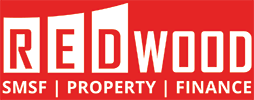SMSFs have enjoyed the ability to borrow to buy residential and commercial property since 2007. Its been an extremely popular strategy for mum and dad investors and “millennials” looking to increase their exposure to property with the booming property market in major capital cities.
LRBAs – The stats
The statistics on LRBA’s are a little behind the curve. Accordingly to the ATO, in 2016, there was a reported $25.4 billion in LRBA’s with $19.5 billion in SMSF Loans, with the average SMSF loan of $372,000. To put this in context, there are over $700 billion in SMSF assets – with LRBA’s representing 3.5%. Why the fuss?
On 22 March 2019, a report completed jointly by the ATO & Council of Financial Regulators found that assets held by SMSFs under limited recourse borrowing arrangements – LRBA – are unlikely to pose systematic risk to the financial system. The report found that LRBAs form a relatively low proportion of SMSF assets overall with on 8.9% of SMSFs having a LRBA. Those arrangements hold 5.2% of total SMSF assets or 1.4% of total Superannuation Assets (I.e. including industry funds and small APRA funds).
Following the release of the report, the Federal Government announced that they will not be making any changes to LRBAs. However, nothing is concrete as there is a Federal Election in May-June of this year which may see a change of government. Bill Shorten has spoken about his desire to end SMSF loans as well a negative gearing and we doubt that the ATO & Council of Financial Regulators report will lead to a change of heart for Labor and Shorten.
What is a LRBA?
In 2007, s67A of the Superannuation Industry (Supervision) Act 1993 (SISA) was introduced to allow borrowing to buy property. The LRBA or SMSF loan would be different to any other investment loan as they are “limited recourse” not full recourse – with the rights of the lender in the event of default limited to the asset held under the LRBA. This is not the case for other loans which are full recourse. As a result, SMSF loans are generally more onerous, and has a higher interest rate – for example market lenders offer a investment loan at around 4% comparison rate whereas SMSF Loans will start at 6% with a large application fee and legal fees of up to $3000. In addition, there are costs involved with financial advice and setting up the LRBA.
What is the current state of the SMSF loan market?
The market has changed significantly over the last 24 months. Currently, no top 4 lender offers SMSF residential loans. Recently, we have seen the exist of St George including Westpac and Bank of Melbourne and more recent the exist of CBA’s Supergear product. This was followed by AMP. The death knell was the recent announcement by Macquarie to exit the SMSF Loan market with no applications being received for SMSF residential loans from 30 April 2019, with any applications in progress need to settle by 30 June 2019.
The pressure on SMSF loans was caused by the APRA pressure on investment lending which saw many lenders increasing their rates by 100 basis points within a six month period. Further, the recent Royal Commission testimonies which have seen major breaches by “certain” banks followed by ASIC’s recent report in the quality of advice in SMSFs, which was scathing for the Financial Planning Industry – which also reflects on the banks providing the loans. In effect, SMSF loans are in the “too hard” basket for the banks, which leaves us with the niche non-bank lenders.
So where does this leave us now?
It is definitely harder to obtain a SMSF Loan now rather than 12 months ago. However, this creates an opportunity for the remaining lenders in the market which are generally specialist non bank lenders such as La Trobe Financial and Liberty Financial. These lenders donot have a “minimum balance” for the SMSF which was a roadblock with CBA, Macquarie and St George.
Will SMSF Lenders hang around?
Well that is the golden question on most SMSF specialists and investors. There is quite a bit of uncertainty including more than just the Labor Party wanting to ban SMSF Loans with ASIC looking to also intervene in the space, while also acknowledging in a recent report that control is the number one reason why a person will decide to set up an SMSF. We are still seeing new SMSFs steady with punters looking to take advantage of a decline in the property market before its too late for SMSFs to borrow and buy property.
The negative press around SMSF’s is certainly influencing the SMSF lending space, however this is a market that continues to grow and therefore there will always be a lender around as long as SMSF borrowing is allowed by SISA.
If Labor comes in – what about my off the plan property?
That is the question that will need to be answered. If you have a property settling in 2020, members will be nervous and may seek legal advice to review the contract of sale in order to exist the contract based on the “sunset clause”. We are seeing delays in developments due to a lack of funding for developers so its important to be proactive. If SMSF lending is banned, it would be prudent to implement a transitional period to ensure investors with off the plan purchases are able to obtain finance for purchases. I’m sure this question will be answered as we move closer to the Federal Election. The Coalition government has committed to SMSF loans for the next 3 years based on the ATO & Council of Financial Regulators Report.
What should I do if want to buy a SMSF Property?
First thing to do is to seek qualified advice from a SMSF Specialist, who will be able to guide you through the process of setting up an SMSF and LRBA as well as obtaining a pre-approval for a property. A common mistake people make is buying a property before the SMSF is established – this will lead to disaster. Follow the right process:
- Seek qualified advice
- Establish SMSF
- Obtain pre-approval
- Purchase property
The pre-approval will identify your purchase price and the Loan to value ratio you would like to achieve as well as the repayments on your loan and your proposed cash flow from the property.
I’m purchasing off the plan, what should I do?
Purchasing off the plan no longer has the same “gimmicks” as it used to. For instance in Victoria, the off the plan stamp duty concession has been removed. As a result, we have seen off the plan purchases reduce significantly as many investors would rather purchase a property completed as the same stamp duty will apply.
Like any purchase, seek advice. If you have a settlement post 2020, I would be thinking twice before signing a contract requiring a SMSF loan to settle. This is due to the fact that there will be a federal election in 2019 and if Labor is elected they are likely to implement a ban on SMSF Loans. You would imagine that any existing purchases prior to the SISA before amended to remove LRBAs.
As the lending pool for SMSF Loans is reducing, you can imagine that SMSF Loans may be on the rise. Currently they are steady around the 6% mark, however you could see them on the way up in the future. For this reason, you may consider a fixed rather than variable loan, depending on what the lender offers. Again, seeks specialised advice on the type of loan you consider. It will be close to impossibleto refinance SMSF loans in the future.
How about a Related Party Loan?
Now we are talking – I personally am a fan of related party loans and hold these myself. If a lender is not feasible for you – based on rate or product, you may consider a related party loan. It is important to seek advice prior to entering into a related party loan agreement, however you have the ability to borrow against non-super assets or your personal home (i.e. equity) and on-lend to the SMSF. There is a standard released by the ATO detailing the requirements of the loan.
For example, I plan to buy a property for $500,000. I plan to borrow 70% of the purchase price of the property. I choose to borrow off myself for the reason that either I do not satisfy the SMSF lenders criteria or a prefer to borrow off myself.
Prior to settlement, you will require a loan of $350,000 from either your own funds (i.e. cash on hand) or your equity in property. In addition to the deposit on the property being paid from the super fund, the loan will be made to the SMSF. The maximum LVR will be 70% or $350,000. The remainder of funds will be sourced from the current SMSF liquid assets. The following will need to apply:
- Loan agreement to be drafted detailing the loan to be signed and executed by all parties
- Interest rate of 5.85% Principle and Interest to apply to be paid monthly from the SMSF to the lender
- The interest rate can be fixed or variable
- The loan term should be a maximum of 15 years
- A Registered mortgage over the property is required
The above will apply to both residential and commercial property
In this example, say you are paying a home loan off at 4% comparison rate, and the SMSF is paying you 5.85% P & I, the SMSF will pay interest from the SMSF to you or your offset account. This actually exceeds the payment you are making on your 4% comparison rate on your home loan. This is a clear example of the benefits of a related party loan as opposed to a SMSF loan from a bank. There are no hefty application fee, no legal fees which is a saving in establishment fees of up to $5000. Further, many lenders charge a monthly fee – which adds up over the period of the loan.
For those uncertain about the future of SMSF loans, it may be prudent to consider your ability to use a related party loan, particularly in the event SMSF Loans are removed or banks stop offering SMSF loans altogether. This will certainly, take the power away from the lenders (to an extent) and enable you to provide yourself with a plan B in the event you are unable to obtain a SMSF loan. In the meantime, we will watch closely with the federal election nearing as with a high probability of change of Government – time is running out for SMSF Loans.
Ivan Filipovic is a leading SMSF Specialist Advisor with Redwood. Ivan is a Self Managed Superannuation Specialist with over 20 years provides a range of services across all sectors of Self Managed Superannuation, Property and Finance with an emphasis on long term wealth strategies. Ivan is a Chartered Accountant, Financial Planner, ASIC registered auditor, Mortgage Broker, Tax Agent and Licensed Property Professional.








Leave a Reply